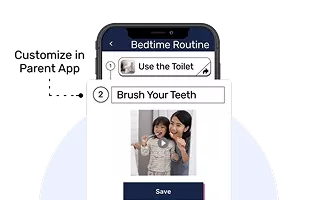Have you ever found yourself at a bustling playground, watching your child stand at the outskirts, their little fingers clenched around the hem of their shirt, eyes wide as they observe the other children? You may think, “Ah, my child is just shy.” But then, those moments make you pause — perhaps it’s the way they recoil from loud noises, their obsession with a particular toy, or their struggle with eye contact. Suddenly, you’re in a whirlwind of thoughts, wondering if it’s more than shyness. Could it be autism? What is the difference between a shy child vs. autism? This is the crossroads many parents find themselves at, questioning the line between a shy child and a child with autism. In this blog post, we’ll unravel this complex web, highlighting overlapping behaviors and, more importantly, distinguishing between shyness and autism. Armed with research, professional insights, and actionable advice, we’ll navigate this intricate landscape together. Remember, understanding is the first step toward acceptance and support.
Table of Contents
Decoding the Speech Patterns
Let’s start with the basics — speech. Shy kids might speak softly or not at all in certain situations. You’ve probably noticed your child whispering to you at a party or clinging to your leg when a stranger says hello. But here’s the catch — kids with autism also struggle with speech, albeit in a different way. They may have difficulty with speech development and communication. For instance, they might repeat words or phrases or have a peculiar rhythm or pitch to their speech.
Here’s an example from my practice. I once worked with a young boy who loved trains. He could tell you everything about them — the types of trains, their parts, even their history. But if you asked him about his day at school, he’d struggle to string together a coherent sentence. This is a common trait in kids with autism — they often excel in their areas of interest but find general conversation challenging.

Read more: 9 of the Best Activities for a Shy Child
Unraveling Social Interactions
Next, let’s talk about social interactions. Shy kids might feel butterflies in their stomachs when meeting new people or in a crowd. However, they’re still able to communicate their needs and wants effectively. On the other hand, kids with autism may find it hard to understand what others are thinking or feeling. They might not pick up on social cues like facial expressions or tone of voice. Moreover, they may find social situations overwhelming and need help to make friends.
Think about it this way — if social interactions were a dance, shy kids might hesitate to join in, but they know the steps. Kids with autism, however, struggle to hear the music. They may stand on the sidelines, not because they’re shy, but because they don’t understand the rhythm of social interaction.
Goally | The Tablet for Neurodiverse Kids

Understanding Other Behaviors
Finally, let’s look into other behaviors. Shy kids might avoid eye contact when they’re uncomfortable. They might fidget, speak in a low voice, or hide behind you. Kids with autism, however, may display different behaviors. They might show little interest in other kids, rarely initiate games, or struggle with pretend play. They might also have specific routines they adhere to and get upset if these routines are disrupted.
For example, I once worked with a girl who would only eat her lunch if her sandwich was cut into four squares and her apple slices were arranged in a specific pattern. Any deviation from this routine would cause her great distress. This need for routine and struggle with change is a common characteristic of kids with autism.
Goally | 100+ Streaming Video Classes
Does your child need some extra guidance on building essential life skills? Goally’s skill building tablet for kids includes a TV app that has the most robust video library of skills training videos for kids. Ranging from content like “How to Brush Your Teeth” to “How to Make Friends at School,” we have dozens of interactive video lessons for kids with thinking and learning differences.

HERE’s a video explaining how to works.
In the journey of parenthood, understanding your child’s behavior can sometimes feel like trying to solve a complex puzzle. But remember, whether your child is shy or has autism, they are still the same extraordinary individual you love. Recognizing the differences between shyness and autism — from speech patterns and social interactions to other behaviors — is the first step towards providing the proper support. As you navigate this path, remember to be patient and understanding and, most importantly, celebrate your child’s unique way of experiencing the world. After all, it’s not about changing them but about helping them flourish in their own unique way.
FAQs About Shy Child vs. Autism
What are the key differences between a shy child and a child with autism? Answer: A shy child understands social cues but may appear distant due to anxiety, while a child with autism struggles to recognize nonverbal signals and maintain eye contact consistently. How can I help my shy child or a child with autism improve their social skills? Answer: Utilize learning tools such as visual schedules, emotional regulation apps, and rewards to encourage positive social behaviors and emotional growth. How can I identify if my child's behavior is caused by shyness or autism? Answer: Observe their ability to read social cues and maintain eye contact, as well as repetitive or obsessive behaviors that may indicate autism rather than shyness. What should I do if I suspect my child has autism? Answer: Consult a pediatrician or licensed psychologist for a professional evaluation and guidance on appropriate intervention strategies. Can learning tools like visual schedules help both shy children and children with autism? Answer: Yes, visual schedules can be beneficial for both shy children and those with autism, as they provide structure and predictability, easing anxiety and promoting healthy development.
This post was originally published on 04/03/2023. It was updated on 02/09/2024.

Goally
We help parents teach their kids life skills, like doing bedtime and morning independently. Backed by science, we incorporate evidence-based practices and expert-informed designs in all of our apps and content.





